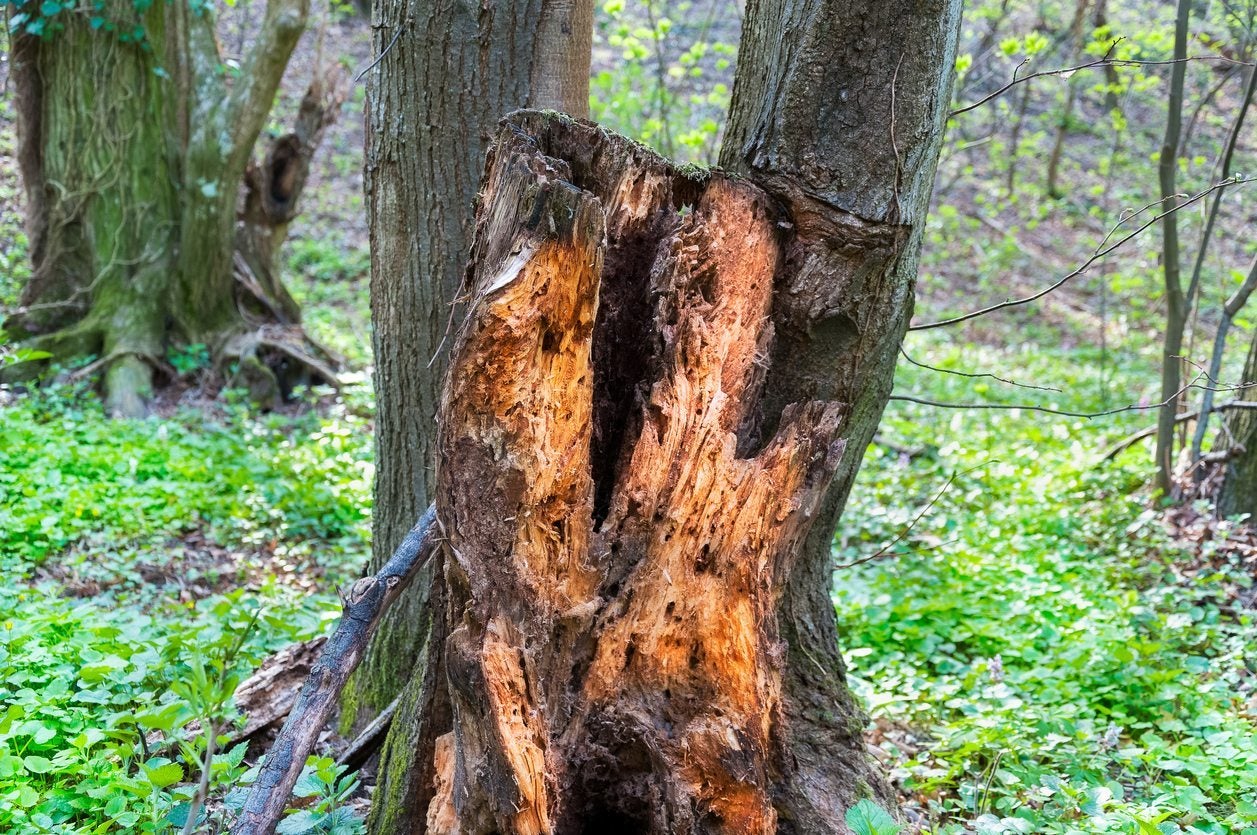Why Is My Tree Rotting: Information About Wood Decay Fungi In Trees


Mature trees are an invaluable asset to many home garden landscapes. Shade trees, flowering ornamentals, and fruit trees are just a few of the options when it comes to creating habitat for wildlife, as well as crafting a welcoming yard space for homeowners. As you can imagine, signs of wood rot and damage to these trees may cause quite a bit of alarm among homeowners.
What is Wood Rot?
Wood rot, or wood decay, occurs in trees due to the presence of various types of fungi. The fungi begin to break down the wood within the tree, thus causing it to weaken. While severe cases of rot may be obvious in the form of large downed limbs, damage to infected trees is not always apparent.
What Causes Wood Rot?
Wood rot begins with damage to the tree. Injury to the tree may be attributed to natural causes or to more "man-made" events. Damage caused by animals, severe storms, or even improper pruning are all examples by which trees may become wounded. Exposed, damaged wood allows for organisms to begin to collect. As the organisms collect and multiply, fungi begin to damage the wood. Over time, the wood in these areas will weaken and become more prone to breakage. Wood decay fungi will continue to colonize and spread throughout the tree, progressively causing damage.
Signs of Wood Rot
While late stages of wood rot are easily identifiable, trees may already have rot issues that are not yet noticeable. In many cases, rot exists for years within a tree before the wood weakening effects have started to cause visible issues. Fungal growths, such as conks, are among the first signs you may notice. These growths appear on the outside of the tree, sometimes near previously damaged areas.
How to Treat Wood Rot
Unfortunately, there are not many options for treatment of wood rot. Once established, it's best to remove any damaged parts of the tree. This is especially important, as the infected trees may be weak and easily prone to fall or drop large limbs. Falling limbs are obviously a danger, especially in the home landscape. Removing infected matter will also reduce the risk of the airborne fungi beginning to colonize on other nearby trees.
Preventing Wood Rot
Though wood rot can be a major issue for already established trees, there are some preventative measures you can take to encourage health and vigor of new plantings. The most important step to preventing rot is preventing injury to the tree. This includes making sure that trees are planted in locations well suited to their required growing conditions. If trees do become damaged, there is no need for immediate worry. Healthy trees use the process of compartmentalization as a mechanism to defend against fungi. Simply, the tree releases compounds to avoid becoming infected. The removal and disposal of any debris in a timely manner will also help discourage the growth and spread of wood decay fungi.
Sign up for the Gardening Know How newsletter today and receive a free copy of our e-book "How to Grow Delicious Tomatoes".

Tonya Barnett has been gardening for 13 years. Flowers are her passion. She has transformed her backyard into a cut flower garden, which she regularly chronicles on her YouTube channel http://www.youtube.com/@tonyawiththeflowers.